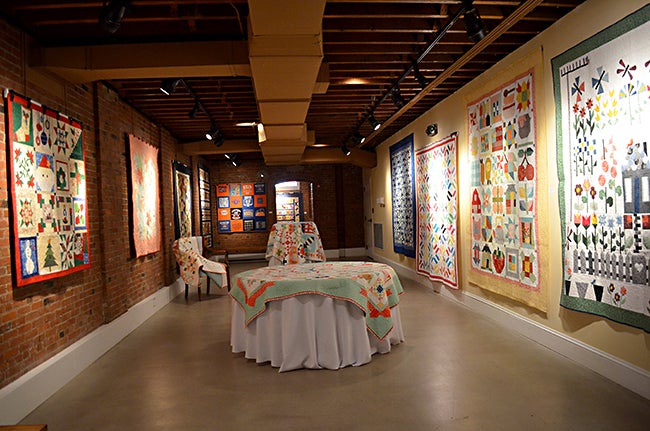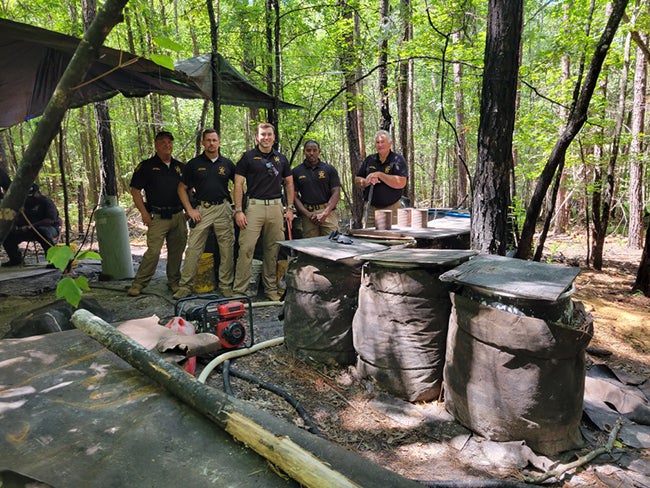Two exhibits at Johnson Center promote seeing things in new way
Published 11:00 pm Friday, June 14, 2013

The Johnson Center for the Arts will host a reception for the “Nicola Ginzel: Language, Symbol, Artifact” and “Earth from Space” exhibitions from 5 until 7 p.m. Thursday. The public is invited to attend. Docents will be available to provide information and answer questions about the exhibits. Johnson Center hours are from 10 a.m. until 5 p.m. Wednesday through Friday and until 3 p.m. on Saturday. For tour accommodations or more information, call 334-670-2287.
In just a few short years, the Johnson Center for the Arts has gained a reputation as an outstanding art gallery that features quality exhibitions all year.
The arts center features local and regional artists, as well as nationally acclaimed artists and popular traveling exhibitions.
Morgan Drinkard, Johnson Center executive director, said the arts center is privileged to have the “Nicola Ginzel: Language, Symbol, Artifact” exhibition in the upper level gallery and excited to have the Smithsonian’s “Earth for Space” exhibit in the lower level gallery.
“Nicola Ginzel is a New York-based contemporary artist who has a compassion for things that comprise daily life and experiences,” Drinkard said. “Nicola Ginzel takes ordinary things and makes them beautiful.”
Drinkard said Ginzel can artistically transform items that were meant to be thrown away into pretty and eye catching works.
“Everyone who views Nicola Ginzel’s exhibit experiences it differently,” she said. “Some people are fascinated by the way she can take something as ordinary as a wrapper from a fast food restaurant and make it interesting, even beautiful.
“Others paid attention to the detail of her work. She hand-stitches many of her pieces. The handwork she uses in crafting them is amazing.”
Drinkard said one example of Ginzel’s process is that she has the ability to take a found object made of paper and embroider it in such a way that the identity of the object disappears and becomes something entirely different.
She works intensively over her miniatures – stitching, painting, frottaging, collaging, applying pastels and pencils.
“Whatever she feels the work requires
to achieve the desired result,” Drinkard said.
Ginzel’s mission seems to be to extend the life of things on their way to being destroyed.
“She collects things that she comes across as she goes and comes,” Drinkard said. “She collects wrappers, plastic bags, boxes, shards of soap and even food. She saves receipts, phone cards, swatches of fabrics, so many ‘things’ but nothing intrinsically valuable.”
She gives value to the things she collects through her art.
“Nicola Ginzel’s artwork reminds us to hold each bit of infinity precious,” Drinkard said. ‘People often tell her that, after viewing her exhibit, they look at ordinary things differently. I think those who view her exhibit will find that true.”
The Johnson Center’s lower level gallery “Earth from Space” exhibit is one of the Smithsonian’s most popular traveling exhibitions and is being made available to more than 700 schools, universities, libraries, community centers and other venues.
The poster exhibit is made available through a partnership with the U.S. Geological Survey. The exhibit won a 2007 U.S. Geological Survey communications award for science content.
The ‘Earth from Space’ exhibit is a set of 20 posters that feature beautifully detailed satellite images of the planet.
“The images provide us with clues about the nature of our planet,” Drinkard said. “They show the swirling arms of a massive hurricane and the grid-like pattern of Kansas farmland. They also show the triangular shadows cast by the Great Pyramids and the winding channels entering the Arctic Ocean. They are amazing images.”
Drinkard said “Earth from Space” illustrates how satellite imagery is gathered and used to expand mankind’s understanding of life on Earth.
It also explores the remote-sensing technology used to gather the images and describes the individual satellites images that are on display.
“The Johnson Center will also have a documentary from PBS, titled “Nova” that will be shown in conjunction with the ‘Earth from Space’ exhibit,” Drinkard said. “The documentary will show how the images were captured and what was happening on Earth at that time. This is an exhibit that anyone who has any interest in our planet will enjoy. These are incredible images of Earth as seen from space.”





